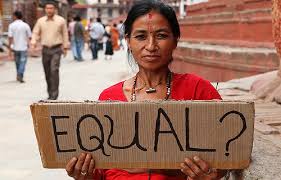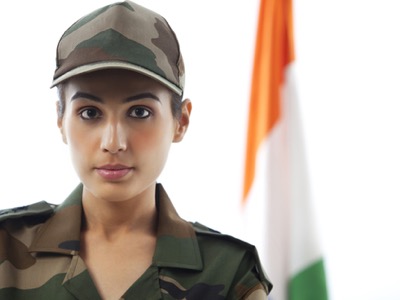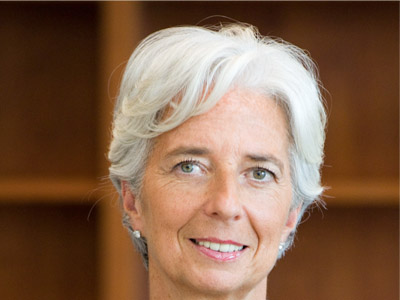 Female voter turnout has been steadily rising in India
Female voter turnout has been steadily rising in IndiaDespite having a female prime minister as long ago as 1966, women in India have historically remained marginal in politics and political parties have made little effort to woo them.
But female voter turnout has been steadily rising while male voter participation has remained unchanged over the past 50 years, a trend observers say can’t be ignored as India holds its 16th general election.
The difference in voter turnout in general elections among men and women has narrowed drastically from 16.7% in 1962 to 4.4% in 2009.
Meanwhile, the last time Indians voted in local polls in 2013 across five states, not only did female turnout reach new heights; in three states – Chhattisgarh, Rajasthan and Mizoram – more women voted than men, repeating a trend already seen in many other states in recent years.
Political analysts say there are a number of reasons behind this, including greater empowerment among women.
“Women in India are told what to wear, what to cook, what to say, how to behave, where to go. But with voting, there is a very clear sense that this is one instance that they’re able to register their own opinion,” said Mukulika Banerjee, an anthropologist at the London School of Economics and author of the book, Why India Votes.
High female turnout is predicted to continue, with observers saying it could have an impact on the outcome of the nine-phase election which began on 7 April and ends on 12 May.
Many surveys suggest slow economic growth and high inflation are among the top concerns.
 Mayawati, Mamata Banerjee and Jayalalithaa Jayaram are powerful regional leaders
Mayawati, Mamata Banerjee and Jayalalithaa Jayaram are powerful regional leadersThis, analysts say, might lead many women to switch support from the ruling Congress – a party they have tended to back since Indira Gandhi became India’s first and only female prime minister – to the main opposition Bharatiya Janata Party or smaller, regional parties.
“In many Indian households, it is the women – not the men – who are most acquainted with household expenditure and who interact with commodity markets. This economic disaffection combined with rising turnout could play into the opposition’s hands,” said Milan Vaishnav, a political scientist at the Carnegie Endowment for International Peace, a Washington DC-based think tank.
‘Change agents’
A study carried out by Mudit Kapoor and Shamika Ravi from the Indian School of Business in Hyderabad also reveals that when women vote in large numbers, it can mean bad news for the incumbents.
Analysing two local elections held in 2005 in the eastern state of Bihar, the pair found that a rise in female voter turnout negatively effected the probability of re-election for a political party, while high male voter participation increased the chances of a party retaining power.
“Women are change agents,” Ms Ravi said.
“In our Bihar study, we found because more women came out and voted – in response to that you saw for the first six, seven months of Janata Dal (United) and BJP rule [the winning coalition in the state], mostly women-centred policies being implemented.”
Since the early 1990s, a third of seats in the country’s village councils have been reserved for women politicians and in some states it’s half.
This too has caused an upsurge in female voter turnout, say analysts, with research suggesting things like female education and maternal health are more likely to be addressed in villages led by women compared with those headed by men.
Yet at the national level there’s no affirmative action despite a bill passed by the upper house of parliament, or Rajya Sabha, in 2010 which has so far failed to be put to the vote.
This means out of a total of 543 seats in the Lok Sabha, the lower house, just under 11% were filled by women in the 2009 polls.
That’s an increase of over 6% from the first general election of 1952, but far lower than today’s global average of 22%.
The pattern appears set to continue.
 More women have voted than men in many Indian states
More women have voted than men in many Indian statesPolitical parties have yet to finalise their list of candidates for this year’s election, but from those already declared until 8 April, just 49 (12%) of Congress’s 419 candidates announced so far are women, while 37 (9%) are women on the BJP nominees list, which so far consists of 415 names.
“No party gives adequate tickets to women, so that is a good indicator to suggest most of the political parties have ignored women in electoral politics,” said Sanjay Kumar from the Centre for the Study of Developing Societies (CSDS), a Delhi-based think tank.
“They still think that women candidates are not able to win elections.”
Some of the country’s most powerful politicians are women, with some of the spotlight currently on Jayalalithaa Jayaram in Tamil Nadu, Mamata Banerjee in West Bengal and Mayawati in Uttar Pradesh – three regional leaders who could play an important role in the formation of the next government if neither the Congress or the BJP win an outright majority.
All three are seen as feisty, but none has been able to consistently rely on female voters.
They have largely ignored women’s issues, according to Shiv Visvanathan, one of India’s leading sociologists. Instead, he says, they have governed knowing that “they are women in a man’s world”.
Manifesto promises
During campaigning over the past several weeks, top prime ministerial contenders Rahul Gandhi of Congress and Narendra Modi of the BJP have sprinkled their rally speeches and TV appearances with mentions of how they plan to improve women’s safety.
Both parties say in their election manifestos that they support having 33% of seats in the Lok Sabha and state-level parliaments reserved for women, which also features in a six-point “womanifesto” issued by women’s groups which the Congress party has endorsed.
Congress in its manifesto also says it will provide sanitary napkins to adolescent girls for free and will increase the number of women-only police stations, while the BJP has promised to reduce the gender gap in the judiciary and introduce self defence classes in school.
But many believe there isn’t yet any genuine outreach to women.
“Appeals to women voters have always been more tokenist in nature,” said Rajeshwari Deshpande, professor at the University of Pune’s department of politics and public administration.
“It’s likely to stay that way for some time.”
That may be so – but with women voting in ever greater numbers, many think Indian politicians will have to start listening.
Read the full article here by Atish Patel






